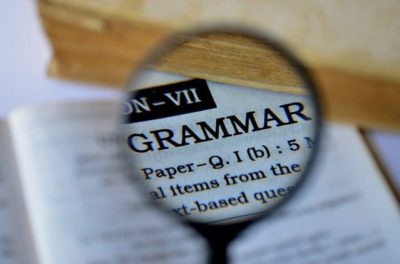
If you’re old enough, you’ll remember from your elementary school days (which used to be called grammar school, remember?) that the participle is a verb form used as an adjective. The past passive participle has almost lost its sense of verbiness and become a plain old adjective. (Are you wearing a shocked look at that statement?) Yet the active past participle too often gets buried under the vague imprecisions of our speech. In speech, it’s not so bad. But vague imprecisions in our writing are what we all try to avoid. Let me pass forward to you some things that an editor once shared with me.
A present participle indicates action co-temporal with the main verb.
“‘I won the grammar prize!’ she cried, dancing around.”
Even as the words of triumph leave her mouth, she is dancing. They happen at the same time. Now, you’ll notice that the main verb, cried, is in the past, but that’s okay. The crying and the dancing take place at the same time. This part is easy.
A past participle indicates action before the main verb.
“Having burst from the hall where the Swedish academy sat in session, she cried, “I won the grammar prize!’”
Here, our Nobel winner had the good taste to leave the hall before she started pumping her fist. If we had used the present participle, she would be crying out—under the offended nose of the doorkeeper—even as she emerged.
Why bother?
The purpose of getting this right isn’t just to look better than your friends. It really shades the meaning.
Writers are always aiming at the original and the precise, aren’t we? We don’t wear blue hats, we wear azure, cerulean, or indigo hats. So incorporate some nuancing by using the right tense of participle. Consider how different the outcome of these two scenarios is, depending on which case of participle is used:
“Checking his parachute, the soldier hurled himself from the plane.” Even as he leaped, he remembered he’d better check his parachute. Oops.
“Having checked his parachute, the soldier hurled himself from the plane.” He went through the safety check, and only then did he leap. The outcome could be very different. And you want to show your readers exactly what the soldier did and the order of doing it. It says something about his character, doesn’t it?
A little hint
Here’s a helpful rule of thumb. In cases where you need the past participle, you should be able to turn the participle into a regular verb and link it to the main verb with an “and then.” “The soldier checked his parachute and then he hurled himself from the plane.” If that’s not what you meant, then stick with the present participle.
All this seems so simple and self-evident, you say to yourself. Why make a big deal about it? Because it can be harder than you think to get it right unless you’re conscious of the distinction. Having once been told about the distinction, you can easily make the best choice!
